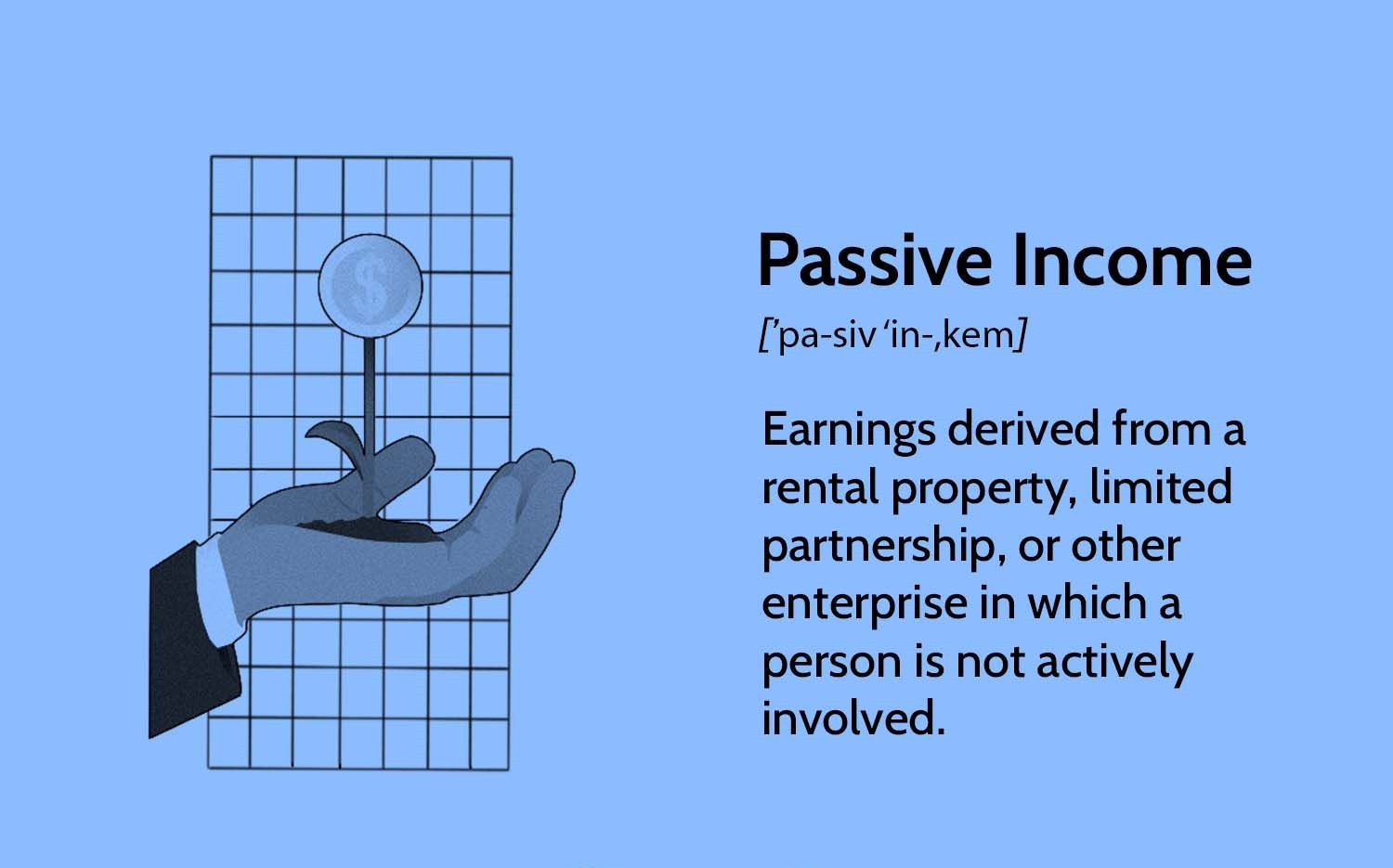Introduction
Welcome to the world of commercial real estate lending! In this article, we will explore the ins and outs of this fascinating sector and provide you with a comprehensive understanding of what commercial real estate lending is all about.
Commercial real estate lending refers to the process of granting financing and loans for various types of commercial properties. This could include office buildings, retail spaces, industrial warehouses, apartment complexes, and more. These loans are typically offered by banks, financial institutions, and private lenders to businesses and individuals looking to invest in commercial real estate.
Commercial real estate lending is a critical component of the economy as it fuels the growth and development of businesses across various industries. Whether it’s a small retail store, a multinational corporation, or a real estate developer, access to capital through commercial real estate loans is often necessary to fund expansion, facilitate property acquisitions, or even cover day-to-day operational costs.
When it comes to commercial real estate lending, there are numerous loan options available, each tailored to specific needs and circumstances. From traditional mortgages to commercial construction loans, the vast array of loan types allows borrowers to choose the financing option that best suits their requirements.
In the following sections of this article, we will delve deeper into the different types of commercial real estate loans, explore how commercial real estate lending works, discuss the factors considered by lenders, and highlight both the benefits and risks associated with this type of financing. Additionally, we will provide valuable insights on how to navigate the process of obtaining a commercial real estate loan.
Whether you are a business owner looking to expand your operations or an individual interested in investing in commercial properties, understanding the world of commercial real estate lending is essential in making informed decisions and maximizing your chances of success.
So, let’s embark on this journey together and discover the fascinating realm of commercial real estate lending!
What is Commercial Real Estate Lending?
Commercial real estate lending is a specialized form of lending that focuses on providing financial assistance for the acquisition, development, and refinancing of commercial properties. It involves granting loans to businesses and individuals for various purposes related to commercial real estate, such as purchasing office spaces, retail centers, industrial buildings, or apartments.
Unlike residential real estate loans that are primarily based on the borrower’s personal income and creditworthiness, commercial real estate loans are evaluated based on the income potential and profitability of the property being financed. Lenders assess factors such as the property’s location, value, income stream, and the borrower’s business or investment plan to determine the eligibility and terms of the loan.
The primary types of commercial real estate loans include:
- Traditional Commercial Mortgages: These loans are similar to residential mortgages, allowing borrowers to finance a property over a fixed term with regular monthly payments. The property serves as collateral for the loan.
- Commercial Construction Loans: These loans provide financing for the construction or renovation of commercial properties. Funds are disbursed in stages as the project progresses.
- Bridge Loans: Bridge loans offer short-term financing to bridge the gap between the purchase of a new property and the sale of an existing one. They provide flexibility and expedite the acquisition process.
- Small Business Administration (SBA) Loans: These loans are backed by the U.S. Small Business Administration and are designed to assist small businesses in acquiring commercial real estate.
- Mezzanine Financing: Mezzanine loans are a form of secondary financing that sits between the equity and debt in a capital stack. These loans are typically used to fund the gap between the down payment and the primary mortgage loan.
Commercial real estate lending involves a comprehensive evaluation process that considers various factors to determine the loan’s feasibility. Lenders analyze the borrower’s creditworthiness, financial statements, and business plan, along with conducting thorough due diligence on the property itself. This rigorous assessment ensures that lenders minimize the risk associated with commercial real estate lending.
Not only does commercial real estate lending provide borrowers with the necessary capital to acquire or develop commercial properties, but it also offers various benefits such as potential tax advantages, the opportunity to build equity, and increased cash flow through rental income. Additionally, commercial real estate loans can be an effective way to diversify investment portfolios and generate long-term wealth.
Nevertheless, commercial real estate lending also comes with its fair share of risks and challenges. Fluctuations in the real estate market, changes in interest rates, and economic downturns can impact property values and affect the ability to repay loans. Borrowers should carefully consider these risks and ensure they have a solid business plan and contingency strategies in place.
In the next sections, we will delve deeper into how commercial real estate lending works, the crucial factors lenders consider when evaluating commercial real estate loans, as well as the steps involved in obtaining a commercial real estate loan.
Different Types of Commercial Real Estate Loans
Commercial real estate loans come in various forms, each tailored to meet specific financing needs and property types. Understanding the different types of loans available can help borrowers make informed decisions and select the option that best suits their requirements.
Here are some of the most common types of commercial real estate loans:
- Traditional Commercial Mortgages: Traditional commercial mortgages are similar to residential mortgages. The borrower obtains a loan from a lender, usually a bank or financial institution, to finance the purchase of a commercial property. The loan is secured by the property itself, and repayment is made through regular monthly payments over a fixed term.
- Commercial Construction Loans: Commercial construction loans provide financing for the construction, renovation, or improvement of commercial properties. These loans are typically short-term and disbursed in stages or based on specific milestones of the project. Once the construction is complete, borrowers often refinance the loan with a traditional commercial mortgage.
- Bridge Loans: Bridge loans are short-term loans that provide temporary financing until a more permanent financing option is secured. These loans help bridge the gap between the sale of an existing property and the purchase of a new one. Bridge loans are useful when timing is crucial, allowing borrowers to proceed with a property acquisition while awaiting the sale of another.
- Small Business Administration (SBA) Loans: SBA loans are guaranteed by the U.S. Small Business Administration and are designed to assist small businesses in obtaining financing for commercial real estate projects. The SBA works with lenders to provide favorable loan terms and lower down payment requirements.
- Mezzanine Financing: Mezzanine financing involves obtaining secondary financing that bridges the gap between the borrower’s equity and the primary mortgage loan. Mezzanine loans are often used in conjunction with traditional loans to help borrowers secure additional funds or reduce the down payment required for a commercial property purchase.
- Hard Money Loans: Hard money loans are typically provided by private lenders or investors and are based on the value of the property rather than the borrower’s creditworthiness. These loans offer quick access to financing but often come with higher interest rates and fees.
Each type of commercial real estate loan has its own unique terms, requirements, and repayment structures. It is important for borrowers to carefully analyze the specific needs of their project and choose the loan option that aligns with their goals and financial capabilities.
Additionally, borrowers should consider factors such as interest rates, loan-to-value ratio, repayment terms, fees, and the lender’s reputation when selecting a commercial real estate loan. Consulting with a trusted financial advisor or mortgage broker can provide valuable guidance in determining the most suitable loan option for their specific situation.
In the next section, we will explore how commercial real estate lending works, including the evaluation process that lenders use to assess loan applications.
How Commercial Real Estate Lending Works
Commercial real estate lending involves a structured process that allows lenders to assess the risk and viability of providing funding for commercial property acquisitions or development projects. Understanding how commercial real estate lending works can help borrowers navigate the loan application process effectively.
Here are the key steps involved in commercial real estate lending:
- Prequalification: The first step in the lending process is prequalification. Borrowers need to provide the necessary financial documents to lenders, including personal and business financial statements, tax returns, and credit history. Lenders assess this information to determine the borrower’s creditworthiness and financial capabilities.
- Property Evaluation and Valuation: The lender conducts a comprehensive evaluation of the commercial property being financed. This includes assessing the property’s location, condition, income potential, market value, and any potential risks or limitations. Appraisals may be conducted to determine the property’s current market value.
- Loan Application: Once the borrower is prequalified, the loan application process begins. Borrowers provide detailed information about the property, including the purchase price, intended use, and business plan. Lenders review these details to assess the loan’s feasibility.
- Underwriting: During the underwriting phase, lenders analyze the borrower’s financials, credit history, and the property’s valuation to assess the risk associated with the loan. This involves evaluating the borrower’s debt-to-income ratio, repayment ability, and the property’s income potential. Lenders may request additional documentation or clarification during this stage.
- Loan Approval and Terms: If the loan application is approved, the lender will provide a loan offer, outlining the loan amount, interest rate, repayment terms, fees, and any specific conditions. Borrowers should thoroughly review and understand the terms before accepting the offer.
- Loan Closing: Once the borrower accepts the loan offer, the loan closing process begins. This involves signing the necessary legal documents, such as the promissory note, mortgage or deed of trust, and any other required agreements. At closing, the loan funds are disbursed to the borrower, and the borrower takes legal ownership of the property.
- Loan Repayment: After closing, the borrower is responsible for making regular loan repayments as agreed upon in the loan terms. This typically includes principal and interest payments, plus any additional fees or charges. Failure to make timely repayments can result in penalties, default, and potential loss of the property.
It is important for borrowers to understand that commercial real estate lending is a risk-based process. Lenders evaluate the borrower’s creditworthiness, the property’s income potential, and the overall viability of the loan. Borrowers should be prepared to provide accurate and up-to-date financial information, as well as a well-developed business plan to increase their chances of securing financing.
Working with knowledgeable professionals such as real estate agents, mortgage brokers, and financial advisors can help borrowers navigate the complexities of commercial real estate lending and ensure they are well-prepared for each stage of the process.
In the next section, we will explore the key factors considered by lenders when evaluating commercial real estate loans.
Factors Considered by Lenders in Commercial Real Estate Loans
Lenders assess numerous factors when evaluating commercial real estate loans. These factors play a vital role in determining the loan’s terms, interest rates, and the overall risk associated with the financing. Understanding these considerations can help borrowers prepare and present a strong loan application.
Here are key factors that lenders typically consider in commercial real estate lending:
- Property Type and Location: The type and location of the commercial property being financed heavily influence lending decisions. Lenders have preferred property types and locations based on market demand, property stability, and potential income streams. Properties in prime locations and with strong demand are often looked upon more favorably.
- Borrower’s Creditworthiness: Lenders assess the borrower’s creditworthiness, which includes reviewing credit scores, history of debt repayment, and financial stability. A strong credit profile can increase the borrower’s chances of securing favorable loan terms and lower interest rates.
- Income Potential and Cash Flow: Lenders carefully evaluate the income potential and cash flow generated by the property. This includes analyzing current and projected rental income, lease agreements, and potential vacancies. Lenders prefer properties with stable and consistent income streams to ensure sufficient cash flow for loan repayment.
- Loan-to-Value Ratio (LTV): The loan-to-value ratio is the ratio of the loan amount to the appraised value of the property. Lenders typically require a certain LTV limit, and borrowers may need to make a higher down payment if the loan amount exceeds this limit. A lower LTV ratio reduces the lender’s risk and can result in more favorable loan terms.
- Debt Service Coverage Ratio (DSCR): The DSCR measures the property’s ability to generate enough cash flow to cover the loan’s principal and interest payments. Lenders typically require a minimum DSCR to ensure repayment capacity. A higher DSCR indicates a lower risk for the lender and increases the borrower’s chances of loan approval.
- Borrower’s Experience and Expertise: Lenders consider the borrower’s experience and expertise in managing commercial properties. Experienced borrowers with a successful track record are viewed as lower risk and may have an advantage in obtaining favorable loan terms.
- Appraisal and Property Evaluation: Lenders rely on professional appraisals and property evaluations to determine the current market value of the property. These evaluations assess the property’s condition, potential risks, and any necessary repairs or improvements. The appraisal value influences the loan amount and the collateral’s effectiveness.
- Market Conditions and Economic Factors: Lenders take into account market conditions and economic factors, including local real estate trends, interest rates, and economic stability. These factors can impact the property’s value and the borrower’s ability to generate income, affecting loan terms and overall risk.
Borrowers should understand that lenders assess these factors collectively to determine the overall risk associated with the loan. Borrowers who can provide solid financials, demonstrate property stability and income potential, and prove their ability to manage and repay the loan are more likely to secure financing on favorable terms.
Before approaching lenders, borrowers should prepare by gathering the necessary financial documentation, creating a comprehensive business plan, and conducting thorough research on the property and local market conditions. Consulting with a trusted financial advisor or mortgage broker can provide valuable guidance in understanding the lender’s perspective and preparing a strong loan application.
In the next section, we will delve into the benefits of commercial real estate lending for borrowers.
Benefits of Commercial Real Estate Lending
Commercial real estate lending offers a range of benefits for borrowers who are looking to invest in or expand their commercial property portfolios. Understanding these advantages can help borrowers make informed decisions and leverage the power of commercial real estate financing to achieve their goals.
Here are some of the key benefits of commercial real estate lending:
- Opportunity for Wealth Creation: Commercial real estate investments have the potential to generate significant returns and build long-term wealth. By acquiring income-producing properties, borrowers can benefit from rental income and property appreciation over time.
- Portfolio Diversification: Commercial real estate provides an opportunity to diversify investment portfolios. By adding commercial properties to their portfolio, borrowers can reduce risk by spreading investments across different asset classes and industries.
- Tax Advantages: Commercial real estate ownership offers various tax advantages. Borrowers may be able to deduct mortgage interest, depreciation, property taxes, and certain expenses related to property management. These tax benefits can help reduce overall tax liabilities and increase cash flow.
- Equity Building: As loan payments are made, borrowers gradually build equity in the commercial property. This equity can be leveraged for future investments or accessed through refinancing to fund other business activities or property acquisitions.
- Income Generation: Commercial properties generate rental income, which can provide a steady cash flow for borrowers. This income can be used to cover loan payments, property expenses, and potentially generate a profit. Stable cash flow from well-managed properties can contribute to the financial stability and growth of businesses.
- Hedge Against Inflation: Commercial real estate investments have historically acted as a hedge against inflation. Rents and property values tend to increase over time, helping borrowers preserve and potentially increase their investment value as prices rise.
- Control and Flexibility: Owning commercial real estate provides borrowers with control and flexibility over their properties. They can make decisions regarding improvements, tenant selection, lease terms, and overall property management. This control allows borrowers to adapt and respond to market conditions and optimize their investment strategies.
It is important for borrowers to carefully analyze these benefits in relation to their specific goals, financial situation, and risk tolerance. Commercial real estate lending can be a powerful tool for wealth creation and financial growth, but it also involves responsibilities and potential risks that need to be managed effectively.
Working with a knowledgeable real estate professional, such as a commercial real estate agent or property manager, can provide valuable guidance in identifying suitable investment opportunities and maximizing the benefits of commercial real estate lending.
In the next section, we will explore the risks and challenges associated with commercial real estate lending that borrowers should be aware of.
Risks and Challenges in Commercial Real Estate Lending
While commercial real estate lending offers numerous benefits, it is important for borrowers to be aware of the potential risks and challenges involved. Understanding these factors can help borrowers navigate the lending process effectively and mitigate potential pitfalls.
Here are some of the key risks and challenges in commercial real estate lending:
- Market Fluctuations: The real estate market is subject to fluctuations, both locally and nationally. Economic downturns, changes in interest rates, and shifts in market demand and supply can impact property values and rental income. Borrowers should be prepared for potential market volatility and have contingency plans in place.
- Property Management Challenges: Managing commercial properties can be complex and time-consuming. Tenants, property maintenance, lease renewals, and legal compliance are just some of the responsibilities that borrowers must handle effectively. Inadequate property management can lead to higher vacancy rates, decreased rental income, and additional expenses.
- Cash Flow Risks: Commercial properties rely on rental income to cover expenses and loan payments. Vacancies, tenant defaults, or economic downturns can impact cash flow and the borrower’s ability to meet financial obligations. It is crucial for borrowers to analyze the cash flow projections carefully and have a contingency plan to address potential income disruptions.
- Loan Default and Foreclosure: In the event of loan default, lenders have the right to foreclose on the property. Borrowers should understand the potential consequences of default and work closely with lenders to explore alternative solutions. Foreclosure can result in the loss of the property and have a significant negative impact on the borrower’s creditworthiness.
- Property Valuation Risks: Property valuations are essential for determining loan amounts and collateral value. However, property values can fluctuate, and inaccurate or overestimated valuations can lead to challenges in refinancing or selling the property in the future. Borrowers should conduct thorough due diligence on property appraisals and seek independent valuations when necessary.
- Interest Rate Risks: Commercial real estate loans may be subject to variable interest rates or adjustable rate mortgages. Interest rate fluctuations can impact monthly payments and overall loan costs. Borrowers should carefully consider their risk tolerance and potential interest rate changes when choosing loan products.
- Regulatory and Legal Compliance: Commercial real estate lending is subject to various regulatory and legal requirements. Borrowers must comply with zoning regulations, building codes, and other legal obligations. Failure to comply can result in fines, legal disputes, and negative impacts on the property’s value and cash flow.
Understanding these risks and challenges allows borrowers to proactively address potential issues and implement appropriate risk management strategies. Conducting thorough due diligence, consulting with experts, maintaining financial reserves, and staying informed about market conditions are all important steps in mitigating risks in commercial real estate lending.
Working with experienced professionals such as real estate attorneys, property managers, and financial advisors can provide valuable guidance and expertise in navigating these challenges and ensuring the success of commercial real estate investments.
In the next section, we will explore the steps involved in obtaining a commercial real estate loan.
How to Get a Commercial Real Estate Loan
Securing a commercial real estate loan requires careful planning and preparation. Knowing the steps involved can help borrowers streamline the loan application process and increase their chances of obtaining financing. Here is a general guide on how to get a commercial real estate loan:
- Evaluate Your Loan Needs: Determine the purpose of the loan and assess your financial capabilities. Consider factors such as the desired loan amount, property type, location, and intended use. This evaluation will help you understand your borrowing requirements and identify suitable loan options.
- Gather Financial Documents: Prepare all the necessary financial documents required by lenders. This typically includes personal and business financial statements, tax returns, bank statements, and any additional information requested by the lender to assess your creditworthiness.
- Develop a Solid Business Plan: Create a comprehensive and well-researched business plan that outlines your investment objectives, property analysis, market analysis, and revenue projections. This plan will demonstrate to lenders the viability of your project and your ability to generate income from the property.
- Research and Identify Suitable Lenders: Research and identify potential lenders who specialize in commercial real estate loans. Consider their loan offerings, lending criteria, experience, and reputation. Obtain multiple quotes and compare terms, interest rates, and fees to ensure you receive the most favorable loan terms.
- Submit Loan Application: Prepare and submit a complete loan application to the chosen lender. Provide accurate and detailed information about yourself, the property, and your financial situation. Include supporting documents such as your business plan, property appraisals, and any other relevant information requested by the lender.
- Undergo Lender’s Evaluation: The lender will conduct a thorough evaluation of your loan application. This may involve a property appraisal, credit analysis, income verification, and assessment of your ability to repay the loan. Be prepared to provide additional information or answer any questions the lender may have during this evaluation process.
- Negotiate Loan Terms: Once the lender approves your loan application, carefully review the loan offer and negotiate terms if necessary. Pay attention to the loan amount, interest rate, repayment schedule, fees, and any specific conditions outlined in the offer. Seek professional advice if needed to ensure you are getting the most favorable terms.
- Complete Due Diligence: Before closing the loan, conduct extensive due diligence on the property. This may involve getting property inspections, reviewing lease agreements, researching zoning requirements, and ensuring compliance with environmental regulations. Perform a final review of all loan documents and seek legal advice to ensure everything is in order.
- Close the Loan: Once you are satisfied with the terms and have completed all necessary due diligence, you can proceed to close the loan. Sign all required documents, pay any closing costs or fees, and provide the required funds or down payment. After the loan is closed, you officially gain ownership of the property, and the funds are disbursed.
- Manage the Loan and Property: After closing, diligently manage the loan payments and property operations. Maintain regular communication with the lender, promptly address any issues that arise, and stay updated on market conditions that may impact the property’s value or income potential.
Remember, the specific requirements and steps may vary depending on the lender and the type of commercial real estate loan. Seeking guidance from experienced professionals such as commercial mortgage brokers or real estate attorneys can provide valuable assistance throughout the loan application process.
By carefully preparing and following these steps, borrowers can increase their chances of obtaining a commercial real estate loan and successfully acquiring or developing commercial properties.
In the next section, we will provide a summary of the key points discussed in this article.
Conclusion
Commercial real estate lending is a dynamic sector that plays a crucial role in driving business growth and investment in commercial properties. Throughout this article, we have explored what commercial real estate lending is, the different types of loans available, how the lending process works, and the factors considered by lenders.
Commercial real estate lending offers a range of benefits for borrowers, including wealth creation opportunities, portfolio diversification, tax advantages, equity building, income generation, and control over property investments. However, it is essential to understand the risks and challenges involved, such as market fluctuations, cash flow risks, and property management challenges.
To maximize your chances of securing a commercial real estate loan, it is important to evaluate your loan needs, gather financial documents, develop a solid business plan, research suitable lenders, submit a comprehensive loan application, and undergo the lender’s evaluation process. Negotiating favorable loan terms and completing thorough due diligence are also crucial steps in the loan acquisition process.
Engaging with experienced professionals, including commercial real estate agents, mortgage brokers, property managers, and attorneys, can provide valuable guidance and expertise throughout the lending journey. Their insights can help you navigate challenges, mitigate risks, and make informed decisions when investing in commercial real estate.
Now armed with a comprehensive understanding of commercial real estate lending, you are well-equipped to explore opportunities, make strategic decisions, and embark on successful commercial real estate ventures. By leveraging the benefits of commercial real estate lending and managing the associated risks, you can unlock the potential for long-term wealth creation and business growth.
Remember to stay informed about market trends, regulatory changes, and economic factors that may impact commercial real estate lending. Regularly reassess your investment strategies, seek professional advice when needed, and adapt to evolving market conditions to maximize your returns and achieve your financial goals in the realm of commercial real estate.

























